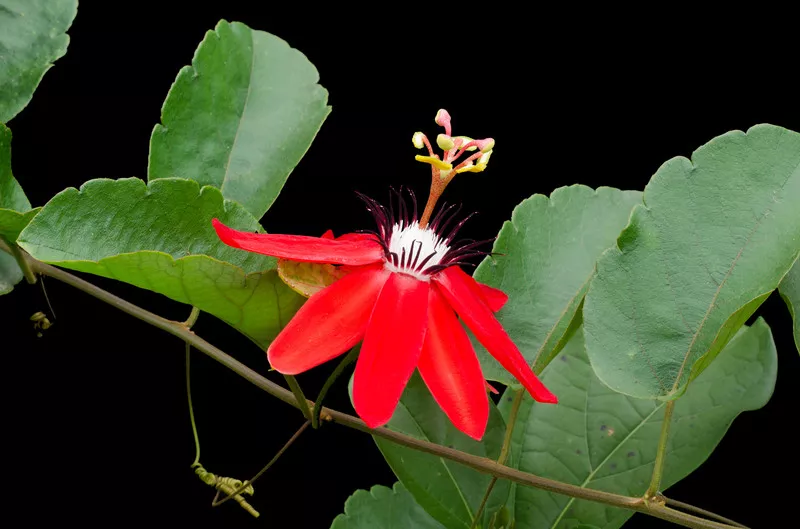The large family of passionflowers is primarily native to Central and South America, although some species can also be found in Australia. The climbing plants are mainly cultivated in gardens, on balconies or as houseplants because of their large, colorful and exotic-looking flowers.

Passion flowers come in many colors
As numerous as the various Passiflora species are, they also differ in their habitat, habit and growth conditions. In addition to numerous blue and white flowering species, the pink and red flower colors in particular exude a very special fascination. None of the red-blooming passionflowers are hardy.
The most beautiful red blooming passion flowers
| passiflora | flower size | flower color | origin | maintenance effort |
|---|---|---|---|---|
| P.coccinea | up to 12 cm | scarlet-purple | Brazil, Peru, Bolivia, Venezuela | Flowers only when kept in the conservatory or similar. |
| P. murucuja | up to 6 cm | red to purple | Puerto Rico, Haiti, Dominican Republic | very easy to care for, small in stature |
| P. vitifolia | up to 16 cm | bright red | Nicaragua, Venezuela, Bolivia, Peru | always ensure sufficient water and light |
| P. racemosa | up to 10 cm | deep red | Brazil | Flowers only when kept in the conservatory or similar. |
| P. alata | up to 10 cm | deep red-purple-white | Brazil | Flowers only when kept in the conservatory or similar. |
| P. piresii | up to 12 cm | deep orange | Hybrids of P. quadrifaria and P. vitifolia | easy-care |
Caring for the red passion flower
These passion flowers differ greatly in terms of their care requirements. While Passiflora murucuja reliably shows its small flowers without too much care, other species only develop their enchanting flowers under glass and with a lot of effort. The blossoms of the P. alata, which is also known as the winged passion flower, are particularly demanding but also wonderful to look at. As a rule of thumb: the deeper and darker the red of the flower, the more demanding the Passiflora is in terms of care.
tips and tricks
The Passiflora quadrangularis (giant grenadilla) flowers very colorfully with red petals and a purple-white corona. The fruits, which are up to 30 centimeters long, are edible.